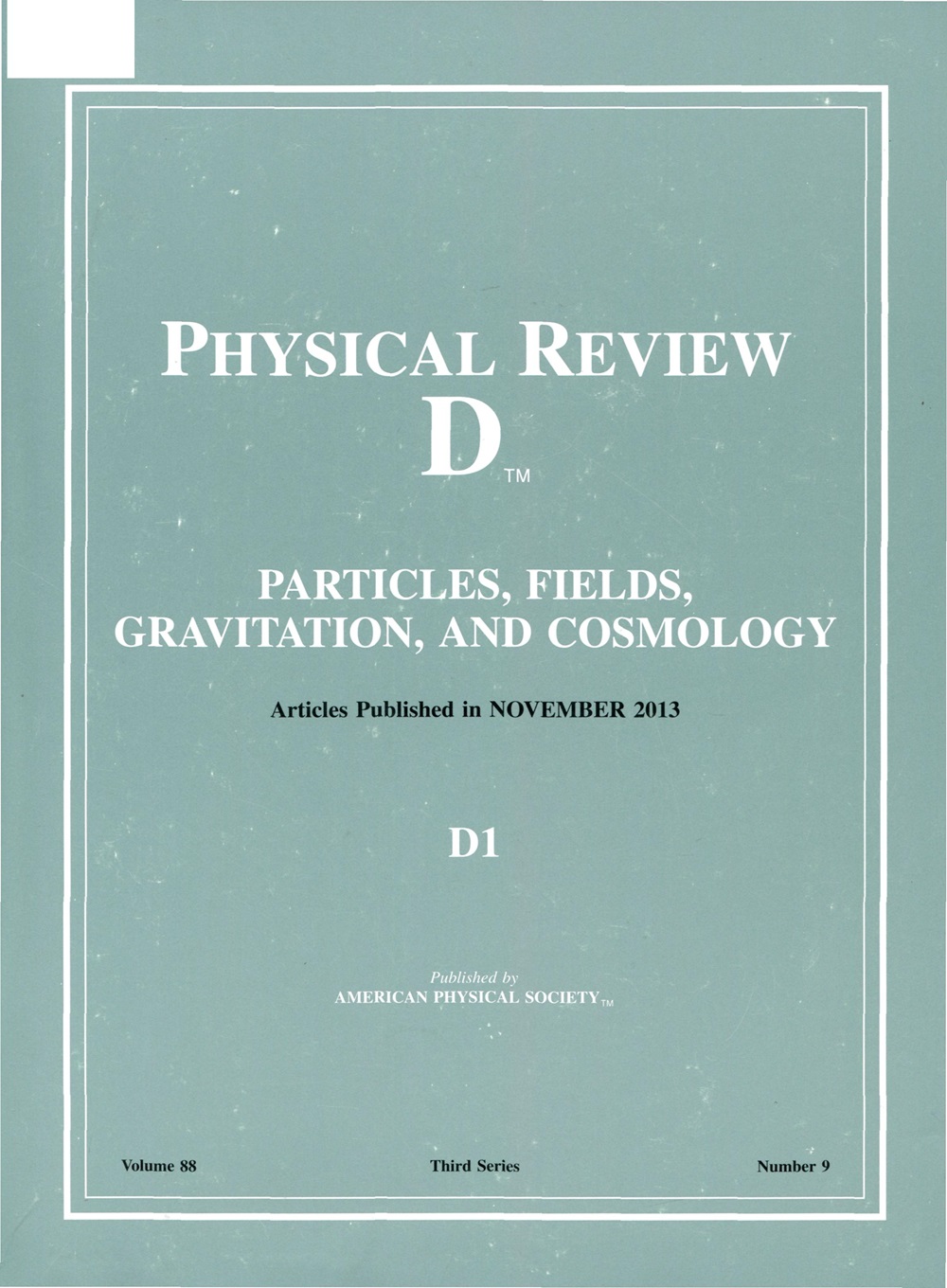Gravitational wave forms for extreme mass ratio collisions from supersymmetric gauge theories
IF 5.3
2区 物理与天体物理
Q1 Physics and Astronomy
引用次数: 0
Abstract
We study the wave form emitted by a particle moving along an arbitrary (in general open) geodesic of the Schwarzschild geometry. The mathematical problem can be phrased in terms of quantities in N=2 supersymmetric gauge theories that can be calculated by using localization and the Alday-Gaiotto-Tachikawa correspondence. In particular through this mapping, the post-Newtonian expansion of the wave form is expressed as a double instanton sum with rational coefficients that resums all tail contributions into Gamma functions and exponentials. The formulas we obtain are valid for generic values of the orbital quantum numbers来自超对称规范理论的极端质量比碰撞引力波形式
我们研究了沿任意(一般开放)史瓦西几何测地线运动的粒子所发出的波形。数学问题可以用N=2超对称规范理论中的量来表达,这些理论可以通过局域化和Alday-Gaiotto-Tachikawa对应来计算。特别是通过这种映射,波形的后牛顿扩展被表示为具有有理系数的双瞬时和,它将所有尾贡献恢复为Gamma函数和指数。对于轨道量子数的一般值,我们得到的公式是有效的。对于r = 2,3,我们明确地验证了我们的结果与在多极后闵可夫斯基量和振幅方法中导出的波形的小质量比极限一致。我们展示了所谓的尾和尾尾对波形的贡献是如何在我们的方法中出现的。最后,我们导出了波形软极限的一个通用公式,它恢复了ωn−1(logω)n形式的所有对数项。2025年由美国物理学会出版
本文章由计算机程序翻译,如有差异,请以英文原文为准。
求助全文
约1分钟内获得全文
求助全文
来源期刊

Physical Review D
物理-天文与天体物理
CiteScore
9.20
自引率
36.00%
发文量
0
审稿时长
2 months
期刊介绍:
Physical Review D (PRD) is a leading journal in elementary particle physics, field theory, gravitation, and cosmology and is one of the top-cited journals in high-energy physics.
PRD covers experimental and theoretical results in all aspects of particle physics, field theory, gravitation and cosmology, including:
Particle physics experiments,
Electroweak interactions,
Strong interactions,
Lattice field theories, lattice QCD,
Beyond the standard model physics,
Phenomenological aspects of field theory, general methods,
Gravity, cosmology, cosmic rays,
Astrophysics and astroparticle physics,
General relativity,
Formal aspects of field theory, field theory in curved space,
String theory, quantum gravity, gauge/gravity duality.
 求助内容:
求助内容: 应助结果提醒方式:
应助结果提醒方式:


